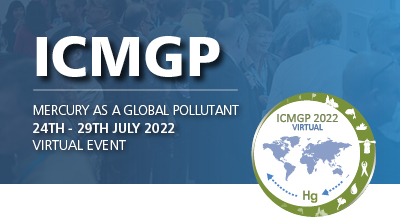| Abstract Title: | Industrial era mercury fate along a peatland chronosequence reveals controls on mercury accumulation |
| Presenter Name: | Kevin Bishop |
| Company/Institution: | SLU Department of Aquatic Sciences and Assessment, Uppsala Sweden |
| Session: | Mercury in the Terrestrial Ecosystems |
| Day and Session: | Tuesday 26th July - Session Three |
| Start Time: | 14:30 UTC |
| Co-Authors: | Kevin Bishop,Jonatan Klaminder,Carolina Olid,Stefan Osterwalder,Haijun Peng,Wei Zhu,Chuxian Li,Mats Nilsson,Jacob Smeds |
Abstract Information :
Organic soils are generally a sink for atmospheric Hg, but independent lines of research indicate that some boreal peatlands and forest soils are now returning Hg to the atmosphere. This raises fundamental questions about what controls the fate of pollution legacy Hg in peatlands. The time Hg spends in the uppermost decimeters of peat between atmospheric deposition on the surface and long-term immobilization deeper in the peat is a period when remobilization is possible, provided the pollution legacy Hg can be reduced to gaseous elemental mercury via abiotic and/or biotic processes.
A 1000-year chronosequence of mires created by isostatic uplift along the northern coast of Sweden provides a unique opportunity to examine the interplay between chemical, biological and environmental processes that control Hg remobilization after deposition. Despite uniform climate and atmospheric Hg concentrations across the 15 km extent of the chronosequence, the stock of Hg differs by a factor of 2, correlating with mire age. From this, we hypothesized that when Hg emission controls abruptly decreased atmospheric Hg concentrations over northern Europe ca. 1980, the Hg accumulated in the peat during periods of higher atmospheric Hg concentrations was no longer in balance with the contemporary atmosphere, leading to net Hg evasion.
This study presents a test of this hypothesis based on the Hg stock in the upper 50cm of the chronosequence. Thirty peat cores were collected and frozen. Two-cm slices were analysed for total Hg, density and C/N, among other parameters. Dating with two independent methods (14C, 210Pb) reconstructed rates of Hg and C accumulation. Differences in the nutrient status of the chronosequence mires influenced rates of both net C and Hg accumulation. This has implications for peat as an archive of Hg, and more generally the possibilities for large scale remobilization of legacy Hg in organic soils.



